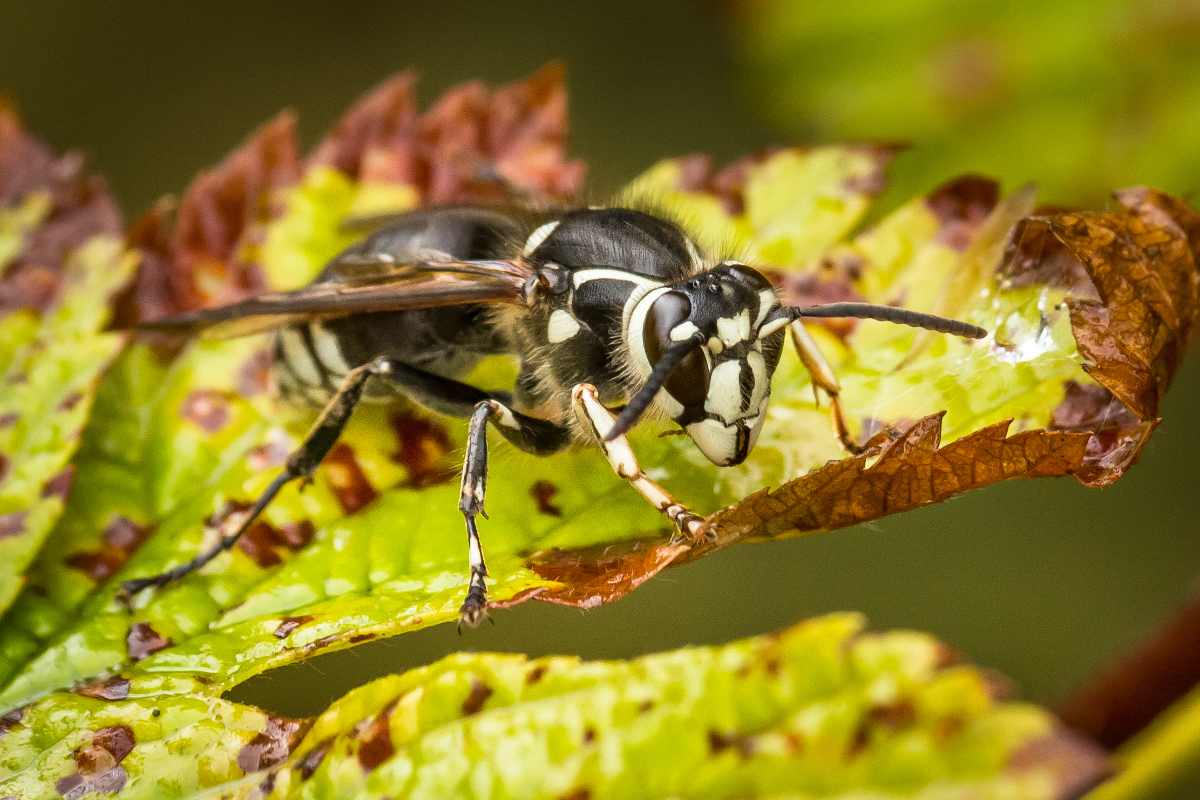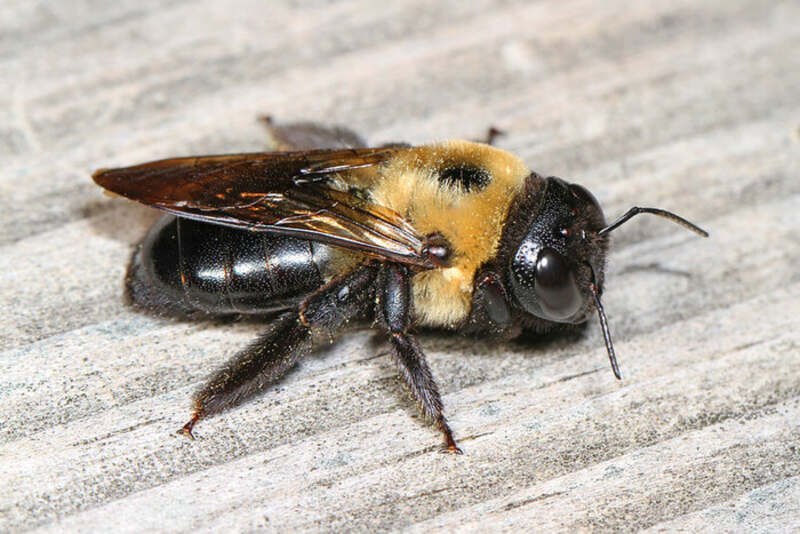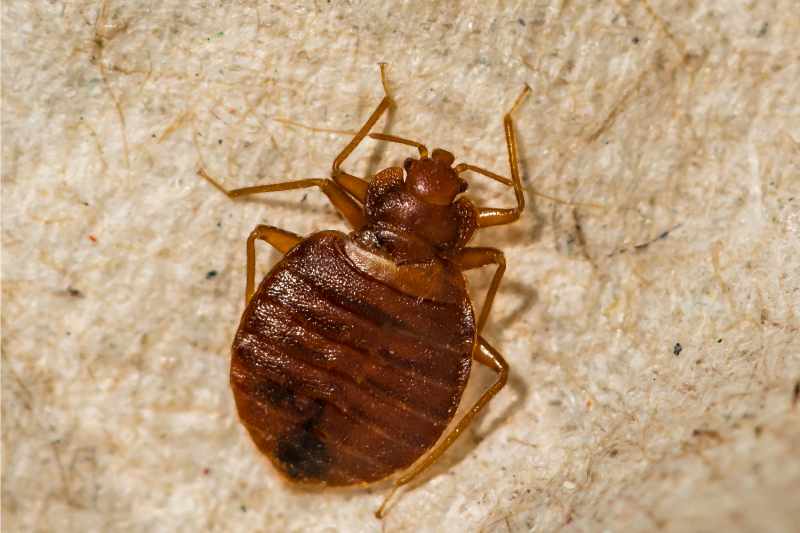
If you call Cincinnati home and you always “gotta get goetta” as you head out, be on the lookout for the five stinging insects that plague Cincinnati as you leave the house. These pesky creatures can leave you with itchy welts that can be a real pain.
Also, some insect bites can lead to allergic reactions. If things couldn’t get any worse, these nasty little creatures can also damage your house. Come along as we learn how to identify and get rid of these stinging pests.
Stinging Insects of Cincinnati

“There are a lot of health risks associated with stinging insects,” says Michael Wedding, technical director at Scherzinger Pest Control in Cincinnati. “It can be a surprise: All of a sudden, …you get stung multiple times, but you just don’t know when you came across the insect or nest.”
Of course, in the cooler weather, you won’t come across a big nest of flying, stinging insects, he adds. In the winter, they are nesting and hiding in warm places. But watch out as spring hits. It can become a gathering bug storm. And when they get to a certain size at their peak season, stinging pests can be a big issue.
Check out Michael Wedding’s “top offenders” below. These culprits can sting and harm people and/or damage your property.
Yellow Jackets

Cincinnati homeowners should note that yellow jackets are wasps, not bees. While they are sometimes mistaken for honey bees due to their appearance, yellow jackets are typically more slender, boldly colored, and less hairy.
In the spring, these somewhat aggressive wasps start developing nests. They can nest in the ground and wherever they find a cavity. “They get really busy starting to build up their nests in the summer,” Wedding says. “They are small, so you don’t really see them.”
Note: During the summer, yellow jackets actively search for food and grow to the size of a penny.
Here are five tips for Cincinnatians to spot yellow jackets and keep themselves safe:
- Observe your yard and garden often.
- Walk all sides of your home and garage to check if any nests are in the process of being built or have been built.
- Watch for the flight pattern of the yellow jacket and find where they enter their nest. (Wedding says, “Their flight pattern is the exact same pattern each time. It’s a constant flow.”)
- Avoid that area once you have determined where the nest has been built. (Yellow jackets will repeatedly chase and sting trespassers.)
- Connect with a pest control expert.
Caution: Sometimes, while working in their yard, gardeners mistakenly disturb a yellow jacket’s nest as they plunge a shovel into the soil or while mowing the lawn.
Bald-Faced Hornet

Photo Credit: Marvin Smith / Flickr / CC BY SA-2.0.
These insects, which Wedding says are not really hornets but more like yellow jacket wasps, mature into a little bit bigger than a yellow jacket. They develop into the size of a nickel with black and yellow or black and white striping. They get their name from the ivory-white markings on their face, thorax, legs, and abdomen.
When identifying a bald-faced hornet nest, here are some things to look for:
- They make their nests from fecal matter, saliva, dirt, and debris.
- In early spring, their nests start out the size of a golf ball.
- As the nest grows, it looks like a papier-mache object.
- They can be seen in trees, on the sides of buildings, and around light posts or patio lights.
- Be observant before the nest gets large. (They can be more aggressive than yellow jackets when disturbed.)
Note: Have you noticed a nest high in a tree? Wedding offers this advice: “If a bald-faced hornet’s nest sits in a tree 20 feet up, it probably is not a threat. But if it’s at ground level, that will affect the public.”
Carpenter Bee

Photo Credit: Judy Gallagher / Flickr / CC BY 2.0
Ohio is home to approximately 500 species of bees, among which the carpenter bee, also called the wood bore bee, is found. Carpenter bees are generally not hostile unless you disturb them. So, leave them alone, and they’ll do the same.
Having said that, Cincinnati homeowners should still be observant about any potential wood damage the carpenter bee can do to their homes. Carpenter bees do not feed on wood. Instead, they drill into it, constructing tunnels for their nests, where they keep food and rear their offspring.
Interestingly enough, the female carpenter bees prefer unpainted wood in which to create their homes. You’ll often find them in:
- Roof eaves
- Attics
- Decks
- Windowsills
- Doors
- Railings
- Porches
- Sides of your home
Once she finds her perfect spot, she drills holes (2 or more inches deep) into the wood and lays eggs inside those wood holes. “You can end up having property damage. Most people will see remnants of them drilling through and pollen and fecal matter on the side of [the] house. It just looks like yellow gunk,” Wedding says. That becomes your indication of a carpenter bee.
Note: If you spot a small hole in your home’s exterior wood, there’s no need to worry just yet. However, it’s important to keep an eye on it since what starts as a single tunnel can quickly escalate into a significant problem as baby bees grow and the hive expands.
Male Carpenter Bee
It may seem like the male carpenter bee is tough, but it’s all for show. Wedding says, “If you take a tennis racket and hit them, it’s not a big issue. They can’t sting you.” Although the male carpenter bee has no stinger, they still protect the nests.
Female Carpenter Bee
Although female bees sting, they also play an important role as pollinators. These bees are larger in size, ranging from a nickel to a quarter, and can be recognized by their furry yellow and black covering. While they have a vital role, they also threaten the public.
Note: Carpenter bees are generally not aggressive. If you don’t disturb them, they won’t bother you either. However, the main concern with these bees is the damage they can cause to wooden structures, which is a more significant issue than their sting.
Cicada Killer Wasp

Photo Credit: Pixnio
According to The Ohio State University Extension, the cicada killer wasp is the largest wasp in Ohio, but female wasps seldom sting humans unless touched.
Wedding says that the males swarm around the nests, and because of their large size, between 1-1/8 to 1-5/8 inches long, it can be intimidating to go out and mow or enjoy your patio.
Note: Like the carpenter bee, only the female cicada killer wasp possesses the stinger.
Female Cicada Killer Wasp
Female cicada killer wasps are relentless in providing food for their young. It’s like a scene out of a horror movie!
Here’s how the horrifying process unfolds:
- Paralyze: The hunt begins when the female cicada killer wasp locates and paralyzes her prey (annual cicada) with a venomous sting.
- Transport: She then hauls the cicada to an oval-shaped chamber — a cell she has carefully prepared for this purpose.
- Reproduce: Her task is almost complete; she lays a solitary egg directly on the immobile cicada in each cell.
- Hatch: Larvae begin to hatch and feed on the paralyzed cicada.
Note: The Extension adds that the females can cause unsightly mounds of soil while tunneling. Some may nest in sandy playgrounds, patio edges, flower beds, or under shrubs.
Bed Bugs

Ugh. Just hearing that “cringe-worthy” word is repulsive. Nobody wants these lecherous creatures around! “They definitely can be an issue,” Wedding says. “These biting bugs hitchhike into people’s homes, and they can spread easily,” he adds.
Bed bugs are tiny oval-shaped brown parasites that are as thin as a credit card and less than ¼ inch long. Because they need blood for survival, they will bite you and your pets, mostly while you’re asleep.
Here are some other interesting tidbits about these tiny creatures:
- Small blood stains: They leave reddish or rusty-colored blood stains on bed sheets after being crushed by sleeping homeowners.
- Fecal droppings and eggs: They deposit fecal droppings and lay eggs along the seams and tufts of mattresses, box springs, pillows, upholstered furniture, and baseboards.
- Movement: They move 5 to 20 feet from their hiding places to feed on their host.
- Feeding: They’ll feast between 3 to 12 minutes on a host.
- Travel: They love to catch a ride on luggage, clothing, and furniture.
- Development: They need a blood meal to grow from one life stage to the next or lay eggs.
- Disease: They are not known to transmit disease, but you don’t want them in your house, as they are known to multiply.
FAQ
What Do Bed Bug Bites Look Like?
A bed bug bite can manifest in different ways on people’s skin, but the most common presentations include:
- Patterns: Zigzag, line, or a random pattern
- Pimple-like bumps: Raised bump with a dark red center and skin tone lighter than normal surrounding it
- Blisters: Clear fluid within round bumps on your skin
- Hives: Raised areas (red or purple in color) of your skin
Note: It’s possible for some individuals to not experience any marks after being bitten. In most cases, the developing marks look similar to mosquito or flea bites and present as slightly swollen bumps with a reddish bruise in the middle that can be itchy.
What Are Some Tips to Get Rid of Carpenter Bees?
There are several ways to keep carpenter bees at bay, from manual methods and insecticides to traps. Check out the methods below.
- Paint: Keep all exposed wood surfaces well-painted with polyurethane or oil-based paint (They prefer unpainted surfaces.)
- Plug: Plug each entrance hole to deny access. (Use plastic, wood, steel wool, or copper gauze and seal it with wood putty or a wooden dowel affixed with wood glue.)
- Seal: Use a sealant to trap carpenter bees inside a sealed gallery.
- Dust: Use a dust formulation in entrance holes and on the wood surface adjacent to the nest entrance. (Pyrethroid insecticides, including permethrin, cyfluthrin, bifenthrin, and deltamethrin are often used for this purpose.)
- Trap: The trap will trick the bees into entering it because they think it’s a nest. Once inside, they’ll be trapped and can’t get out.
How Can You Treat a Yellow Jacket Sting?
Experiencing a yellow jacket sting can be discomforting at best or fatal at worst. Fortunately, there are ways to treat a yellow jacket sting:
- Ice Pack: Use an ice pack, also known as a cold pack, for the pain.
- Over-the-counter antihistamines: Consider taking an antihistamine like Benadryl immediately after getting stung.
- Baking soda and water: Create a paste by mixing a spoonful of baking soda with water and applying it to the sting using a cotton swab or ball.
- Vinegar: Put a little vinegar on a cotton ball and pat it on the bite to help with the impending itching.
- Epi-Pen: Keep an Epi-Pen handy if anyone in your household is allergic to yellow jackets. If you don’t already have one, call your doctor.
Call In The Pros
Cincinnatians who “gotta get goetta” (or perhaps a bag of Grippo’s chips) can now head out confidently, knowing that a pest control pro will handle these stinging insects. An exterminator will eliminate these pests while you spend your time enjoying all the flavors of Cincinnati.
Main Image Credit: beachgrampa / Canva Pro / License